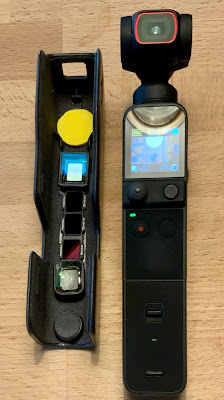The Details
And the problem is the overall user experience - from taking a photo to having it corrected and archived or shared with others. Nothing has changed there for the last 20 years. Clumsy cables, memory card readers, unintuitive software. I remember it took me many hours of tutorial videos to understand the concept and the basic features of Adobe Lightroom. On the other hand anyone can start using Apple Photos or Google Photos without any learning nor training.
My curiosity has pushed me recently into making time lapse video clips. It is a pain using a DLSR. You need to manually calculate all exposure parameters than go through importing thousands of image files to smooth, deflicker, and combine them into a 30-second video clip. And of course it is way easier with a phone camera. But as often making a time lapse means leaving the camera for a couple of hours, it is probably not the most comfortable situation to leave your phone in bushes on a tripod and walk away.
Digging deeper into what could be a good compromise between a phone and a standalone camera, I arrived at DJI Pocket, a small gimbal with an integrated camera. What really sold me on this device was how well it was organized with all the surrounding accessories. USB-C charging, a clip-on wireless microphone (when used for video blogging), and a super cleverly designed case with room for additional lenses and filters. Then I admired how well the software / connectivity options were designed - a Bluetooth signal triggering a very fast WiFi connection, which allowed wireless downloads of content with almost wire-like speed. And plethora of photo / video modes, including - of course - multiple time lapse functions. Among them is the super clever hyperlapse, which - during the time lapse - uses the gimbal motors to act as a panning head. With a traditional (even compact) camera (and a panning head) a similar setup would be 2 kilograms or more. Here I have it in a 150 gram package.
On top of that is a very simple and intuitive software which allows to easily trim the video footage, add background music and do some other simple edits. The edited video shows up in Apple / Google photos and you can take it from there. This type of software / connectivity is what the legacy camera industry is missing. Each vendor today has their own app to interface with cameras, but the experience there is terrible. I think DJI has nailed it. The whole package is a joy to use and produces great results, showing a dedicated camera can still be an attractive product, when well designed as a whole package and software / connectivity working as the users expect

With one important problem Szymon: privacy!
ReplyDeleteYou must create Dji account and have app (with a lot of permissions) to use it.
This is Chinese company gathering a lot of data. Completely unreasonable: why on earth do I need an account on their servers????
My point has been the big Japanese camera makers would be in a different position today if they embraced / addressed the UX/software/connectivity issues. The DJI devices show how this can be done.
ReplyDeleteNow regarding privacy, it is a matter of personal taste. As a private user I don't have a problem here, as I post most of the photos / videos online anyway. I do care of course about privacy a lot in our business products, as some people find it important.
Also a tip when registering with an email: has an email account specially purposed for that.
BTW in my case the DJI Pocket came registered, as I bought a second hand unit. It worked fine on my phone even if connected to the original owner's account. Then I was able to reach out to the seller and have them unregister the device so that I could register it under my (fake) name. You know - on the Internet, nobody knows you're a dog.